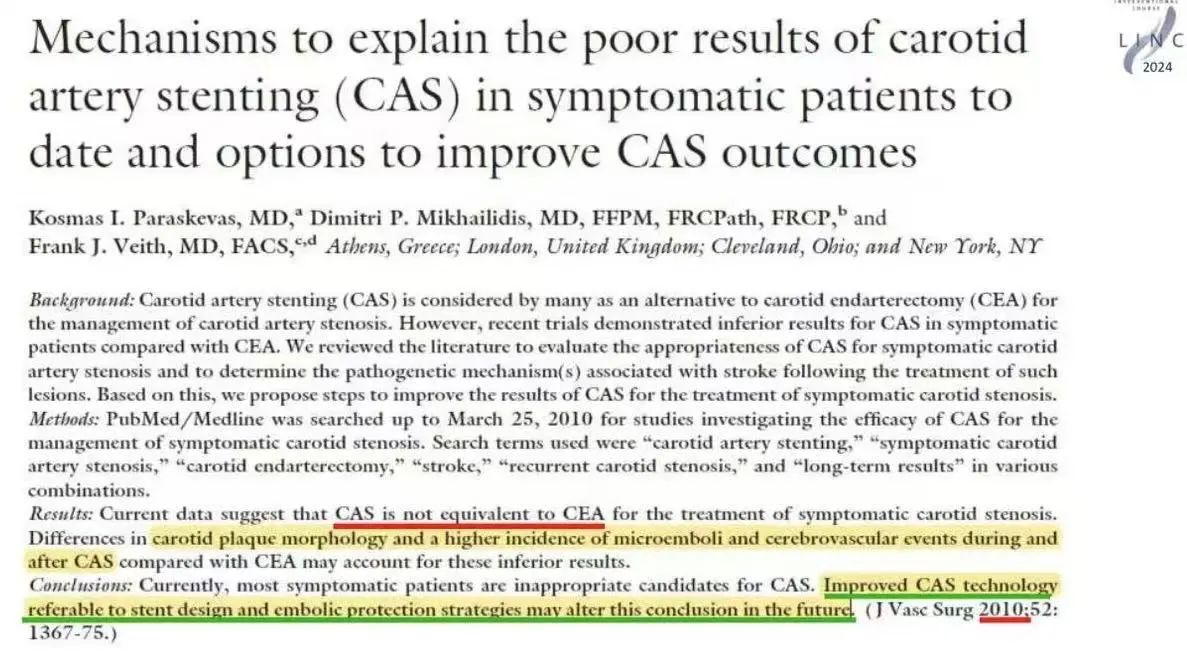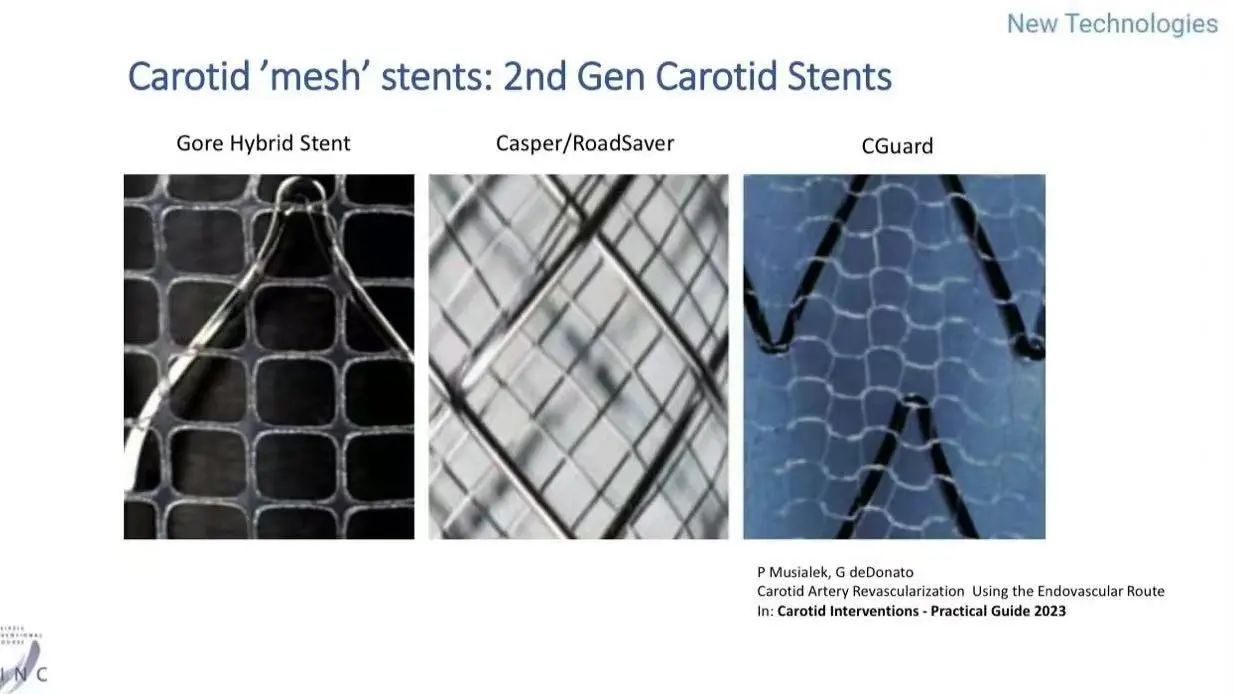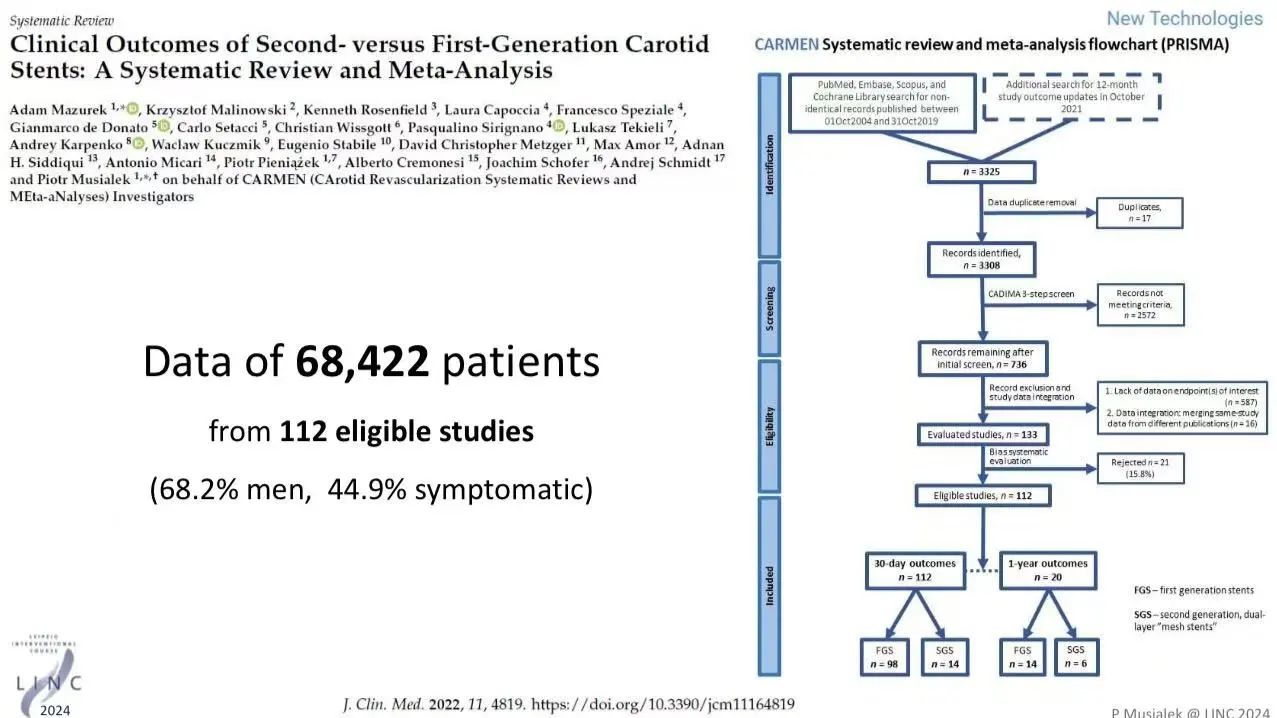Author: Prof. Dr. Piotr Musialek
Institution: Department of Cardiovascular Diseases, Jagiellonian University, Kraków, Poland
Summary
This presentation analyzes key factors in carotid revascularization, focusing on the roles of carotid artery stenting (CAS) and carotid endarterectomy (CEA) in stroke risk reduction. Prof. Musialek proposes guidelines for evaluating the need for carotid revascularization and highlights technical features and use cases for different intervention strategies and protection devices. The recent advancements in “mesh” stents and proximal protection devices offer new opportunities for optimizing CAS outcomes.
Technical Differences Between CAS and CEA
• Comparison of CAS and CEA: In various clinical trials, although CAS use has increased in symptomatic patients, CEA is still considered the gold standard for stroke risk and restenosis prevention. However, second-generation “mesh” stents (e.g., CGuard and RoadSaver) significantly reduce CAS-related brain injury and thrombus burden, presenting new prospects for CAS.


• Advantages of Proximal Protection Devices: For CAS procedures, proximal protection devices effectively prevent most microembolizations, improving outcomes in high-risk lesion patients and narrowing the gap between CAS and CEA.
Clinical Data and Meta-Analysis
• CARMEN Study: A meta-analysis involving 68,422 patients showed that second-generation stents improved both short- and long-term outcomes compared to single-layer stents (SGS). Notably, the CGuard MicroNET-covered stent demonstrated superior stroke and restenosis prevention compared to single-layer stents and traditional CEA.

• CGUARDIANS Study: The CGUARDIANS trial reported a 30-day stroke and mortality rate of 0.95% for CGuard stents, significantly lower than the 2.4% stroke rate in CEA from the ACST-2 study, supporting the potential of mesh stents for high-risk patients.

Conclusion
1. Although CEA remains widely regarded as the “gold standard” for treating carotid stenosis, the improvements in second-generation mesh stents and proximal protection devices have progressively enhanced CAS efficacy.
2. Meta-analyses indicate that mesh stents effectively reduce microembolization risk, making them a viable option for patients with complex lesions.
3. With further randomized controlled trial data, CAS may emerge as the preferred option for certain high-risk patients.
Contact Us
• Email: endovascluar@simtomax.cn
The English content has been synchronized with the Vasco Knight account. For more international information, please visit:
• www.vascularknight.com
• Facebook: Vasco Knight
• Instagram: knight_vasco
Let’s safeguard health together and showcase your brilliance to the world!


